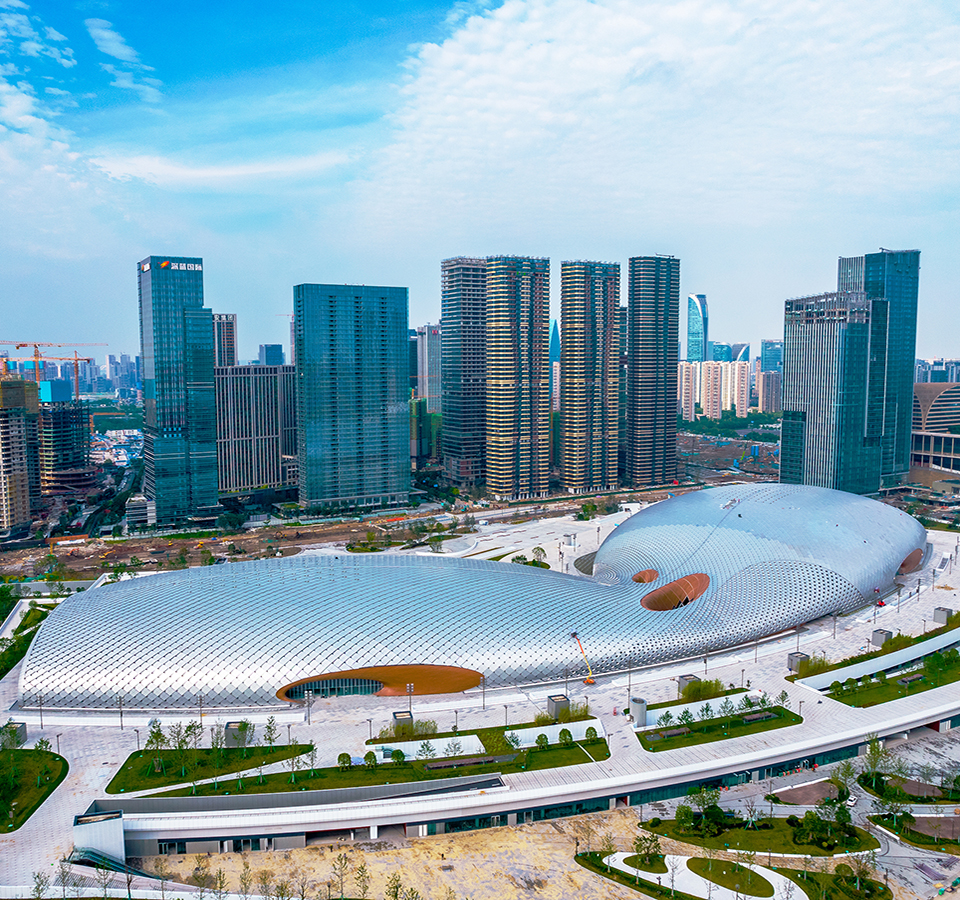As the 19th Hangzhou Asian Games ceremoniously unfolded at China’s east city of Hangzhou on September 23, the attention is on Hangzhou’s mission to orchestrate the first-ever “carbon-neutral” Asian Games. This commitment resonates throughout the games’ preparations in the venues’ construction and technology integration.
As per official announcment, most of the competition venues either are repurposed or temporary, with only 12 being newly built. Among the 44 reused or temporary venues, modular construction and sustainable materials are in the limelight, exemplifying resource conservation and a green ethos.
For instance, Hangzhou University of Electronic Science and Technology’s gymnasium, set to host fencing events, exemplifies sustainable adaptation. Seats and LED screens, despite years of use, were refreshed and reintroduced for the games.
Low carbon and technological brilliance are also evident in newly built competition venues. The Hangzhou Olympic Sports Centre Stadium – an architectural wonder built with 55 steel petals to form a lotus-shaped roof – greatly saves the amount of steel used.
Adopting a similar lotus-shaped design, the Hangzhou Olympic Sports Centre Tennis Centre has pioneered the use of a computerised rotating roof, which allows for the flower petal-like structures to open and close based on weather conditions, thus providing a flexible playing environment.
The Hangzhou Olympic Sports Centre Aquatic Sports Arena is another marvel. Shaped like a butterfly, its rooftop light tubes illuminate the interior with natural light, offering an eco-friendly, energy-saving alternative to traditional fluorescent lighting and saving an estimated 100,000 kWh annually. Each pool within the centre features an advanced water treatment system, which not only filters and disinfects but also decomposes uric acid, optimising energy use by over 15%.
Notably, all of the 56 competition venues are powered by green power. This is sourced from diverse power grids, photovoltaic generation from northwest provinces of Qinghai and Gansu, and wind power from northwest inland autonomous region of Xinjiang and coastal province of Zhejiang.





